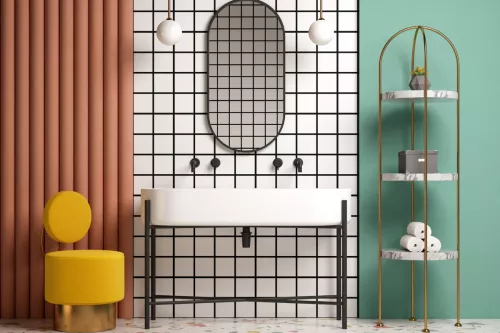A bathroom vanity is an essential element of bathroom design, providing both functionality and aesthetic appeal. Here, we will explore everything about bathroom vanities: what they are, their purpose, the differences between bathroom vanities and cabinets, various types of vanities, their costs, and how to install or remove one. Let’s dive in!
What is a Bathroom Vanity?
A bathroom vanity is a combination of a sink, countertop, and storage space, typically installed in bathrooms. It serves multiple purposes: housing the sink, providing a surface for toiletries, and offering storage for bathroom essentials. Vanities come in various styles, sizes, and materials, allowing homeowners to choose one that fits their bathroom design and functional needs.
Why is it Called a Bathroom Vanity?
The term "vanity" originated from the concept of a "vanity table," a piece of furniture where individuals would sit to groom and prepare themselves. Over time, this concept was adapted to the bathroom, where a vanity now refers to a combination of a sink, countertop, and storage, serving as a central station for grooming and personal care.
What is the Purpose of a Bathroom Vanity?
A bathroom vanity is more than just a piece of furniture; it plays a crucial role in the functionality and aesthetics of your bathroom. Here are the key purposes a bathroom vanity serves:
Functionality:
Provides a space for a sink, essential for handwashing, brushing teeth, and other hygiene activities.
Storage:
Offers storage space for toiletries, towels, and other bathroom essentials, helping keep the bathroom organized and clutter-free.
Aesthetic Appeal:
Enhances the overall design and appearance of the bathroom, contributing to its style and decor.
Learn more:
Home Projects: Ideas for Everyone
Types of Bathroom Vanities
Bathroom vanities come in various types, each suited to different needs and preferences. Choosing the right vanity can significantly enhance the functionality and style of your bathroom. Here’s a closer look at the different types of bathroom vanities:
Freestanding Vanities

Freestanding vanities are standalone units that are not attached to the wall. They offer flexibility in placement and are often designed with a more traditional aesthetic. These vanities come in a wide range of sizes and styles, from vintage to contemporary, making them a versatile choice for any bathroom. Freestanding vanities typically provide ample storage space with drawers and cabinets, and their solid construction adds a substantial feel to the bathroom.
Wall-Mounted Vanities
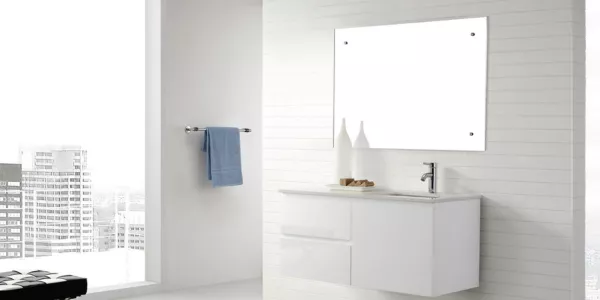
Wall-mounted vanities, also known as floating vanities, are attached directly to the wall. This design creates a modern, minimalist look and frees up floor space, making the bathroom appear larger and more open.
Wall-mounted vanities are ideal for contemporary bathroom designs and are perfect for small bathrooms where maximizing space is crucial. They often feature sleek lines and simple, elegant designs. Additionally, the space beneath the vanity can be used for storage baskets or kept clear for easy cleaning.
Double Vanities
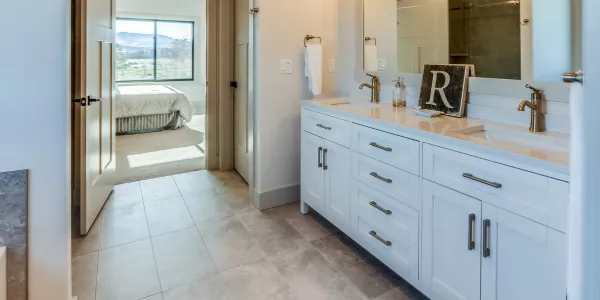
Double vanities feature two sinks and are ideal for shared bathrooms, such as those used by couples or families. They offer ample space for multiple users to get ready simultaneously, reducing morning bottlenecks. Double vanities come in various styles, from traditional to modern, and can be freestanding or wall-mounted.
Corner Vanities
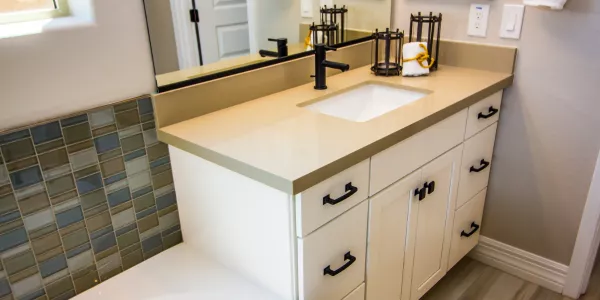
Corner vanities are designed to fit into the corners of a bathroom, maximizing space in small or uniquely shaped rooms. These vanities are an excellent solution for bathrooms with limited space, as they make use of often overlooked corner areas.
Vessel Sink Vanities
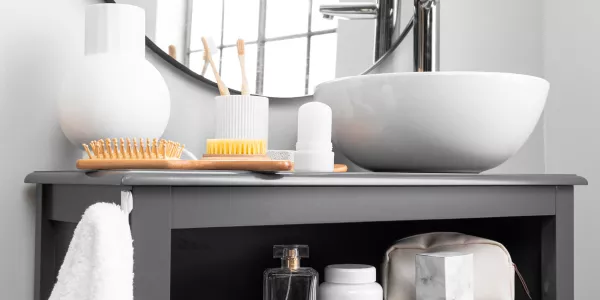
Vessel sink vanities feature a sink that sits on top of the countertop, rather than being recessed into it. This design adds a stylish and contemporary touch to the bathroom. Vessel sinks come in various shapes, sizes, and materials, such as glass, ceramic, and stone, allowing for a high level of customization.
Custom Vanities
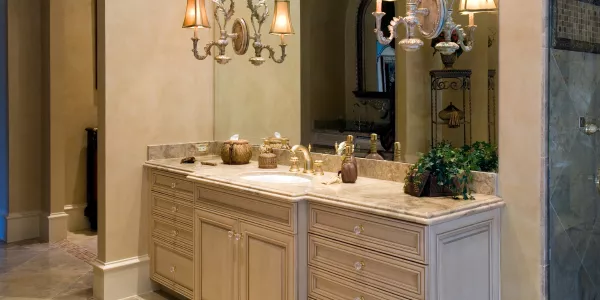
Tailored to fit your specific space and design preferences, custom vanities offer endless possibilities for materials, finishes, and configurations. They are ideal for unique bathroom layouts or for achieving a specific look.
Learn more:
Industrial Styles: Exploring the Evolution, Key Features, and Modern Adaptations
Open-Shelf Vanities
Featuring open shelving instead of traditional cabinets, these vanities offer easy access to towels and toiletries. They provide a modern, airy feel but require careful organization to maintain a tidy appearance.
What is the Difference Between a Bathroom Cabinet and a Bathroom Vanity?
While both bathroom cabinets and vanities provide storage, there are distinct differences between the two. A bathroom vanity includes a sink and countertop, whereas a bathroom cabinet is primarily for storage and does not include a sink.
Vanities are designed to integrate with the plumbing and often feature more decorative elements, while cabinets are typically simpler and focus on maximizing storage space. Installing a vanity involves connecting plumbing, whereas a cabinet can be installed independently without any plumbing considerations.
How Much Does a Bathroom Vanity Cost?
The cost of a bathroom vanity can vary widely based on several factors, including size, materials, and design. Here are some general price ranges:
Budget-Friendly Options: Basic vanities made from inexpensive materials can cost between $100 and $500.
Mid-Range Options: More stylish and durable vanities, often made from materials like wood and featuring granite or quartz countertops, typically cost between $500 and $1,500.
High-End Options: Luxurious vanities made from premium materials and custom designs can cost $2,000 or more.
How to Install a New Bathroom Vanity
Installing a bathroom vanity can transform the look and functionality of your bathroom, giving it a fresh, updated feel. Whether you're renovating your entire bathroom or just replacing an old vanity, knowing the proper installation steps is crucial to achieving a professional finish. Here’s a step-by-step guide to help you install your bathroom vanity with confidence:
Preparation:
Measure the space to ensure the vanity fits, and shut off the water supply.
Removal of Old Vanity:
Disconnect the plumbing, remove the old vanity, and clean the area.
Placement:
Position the new vanity and mark the placement of the plumbing and mounting points.
Plumbing:
Connect the sink to the plumbing, ensuring all connections are secure and leak-free.
Securing the Vanity:
Attach the vanity to the wall using appropriate mounting hardware.
Learn more:
Bathroom Remodel Ideas: Budgets and Trends
Finishing Touches:
Install the countertop, attach the sink, and add any additional hardware or accessories.
Bathroom vanities are a crucial element in bathroom design, providing both functionality and style. Whether you are considering a new installation or replacing an old unit, understanding the various types, costs, and installation processes can help you make an informed decision. With the right vanity, you can enhance the appearance and functionality of your bathroom, creating a more organized and aesthetically pleasing space.
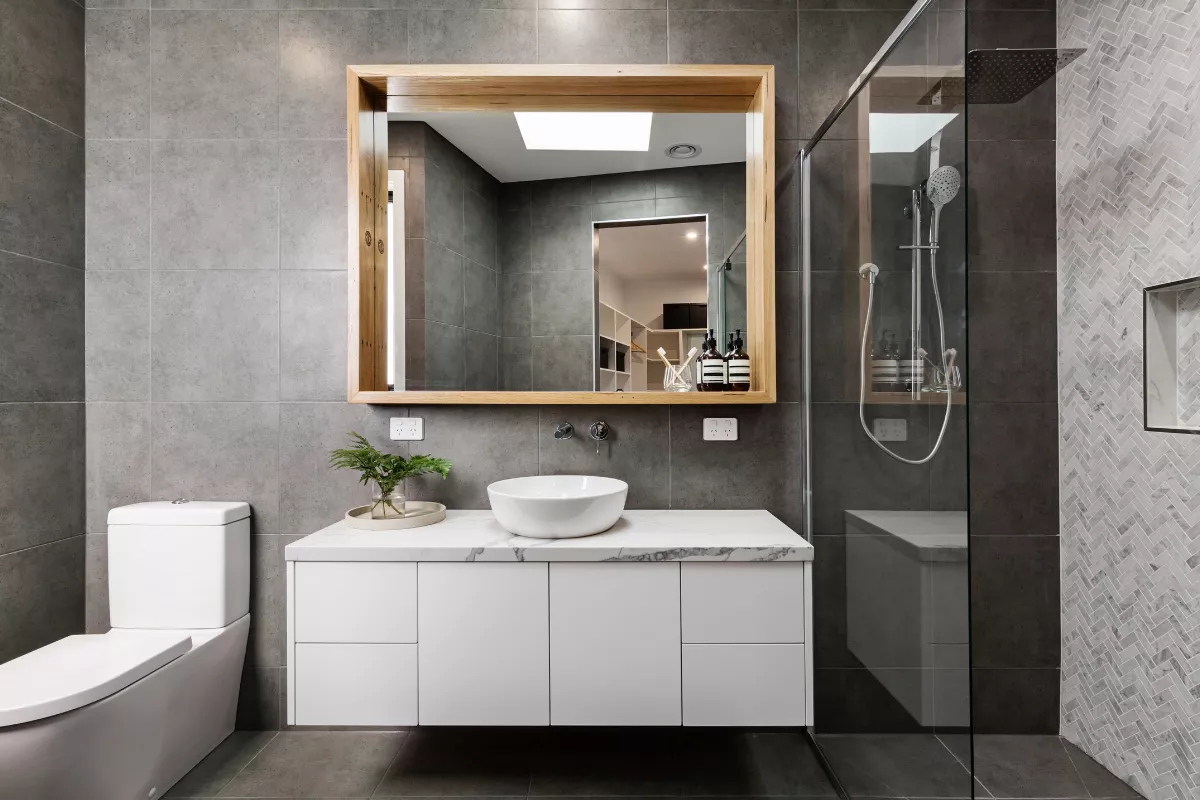
 Marcio Vasconcelos
Marcio Vasconcelos



